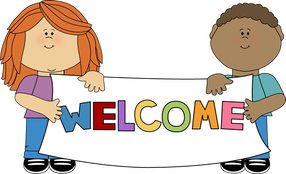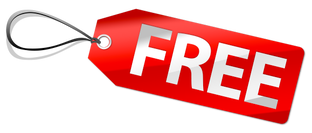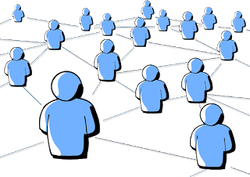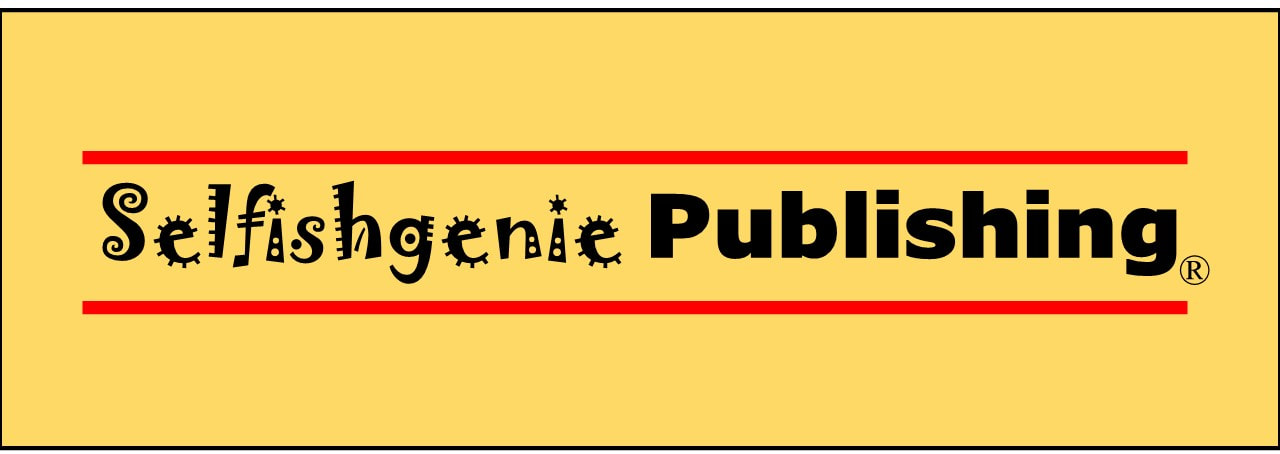Week 8 -To Blog Or Not To Blog, That Is The Question.  As discussed last week, writing a blog is one of the ways that you can engage with potential readers in your target audience. But we’re not just talking about written blogs like this one. The term also covers things like videos on YouTube and Instagram. If you are trying to engage with a young audience, you are going to have far more success with those than you are with the written word. There are also podcasts, which are audio blogs and have a considerable following of their own, especially among people who spend a lot of time travelling. So, anything you read here about blogs, transpose to those other media as well. What is a blog? Time to look in the dictionary. I came across this definition, which is good enough for my purposes: “a regularly updated website or web page, typically one run by an individual or small group, that is written in an informal or conversational style.”
(long before the www was a twinkle in Tim Berners-Lee’s eye) its purpose was to “Inform, educate and entertain”. We couldn’t put it better ourselves. That is what your blog should aim to do. You can do just one of those three things or any combination of them. We hope this blog covers “educate” and “inform”, but if you are entertained as well, that’s a bonus. The important thing is that after reading our blog, you don’t feel you have wasted your time.  If people like your blog, they will come back again for the next one. They may even look forward to the next edition eagerly. And if they are doing that, they are almost certainly going to be interested in anything else you have written. They may even sign up to your email list so that they can keep up to date with your blogs – but be careful not to start spamming people. That’s a quick way to lose friends and followers.  Use the right tone. Use the right tone. The “tone” of your blog is very important, it says a lot about you and affects the way readers will perceive you. If your tone is too stiff and formal, then you will come across as “stuffy” and it may be assumed that your books will be stuffy too. On the other hand, if you are too chatty and informal, people may not take you seriously enough and, therefore, they may not take your books seriously. We’d be interested in hearing from you about what you think of our “tone”. Is it right for what we are trying to do? Is it too stiff and formal or is too laid back and relaxed? Or, is it something else? Feel free to use the comments section to let us know what you think. We have talked already about what interests, other than reading, your target audience might have and that is one thing you can use in your blogs. If your target audience is likely to be interested in dogs, then you can blog about dogs. If they are likely to be interested knitting, you can blog about knitting. If you have done your homework on your target audience, you will probably have come up with a list of things they may be interested in and you can blog about most of them, because you are interested in them too. We have created a list of blog prompts and you can download it at the bottom of this blog.  Where can you post your blog? There are a number of websites that will allow you to host a blog for free. Some of them might try to flog you a range of other services, such as a full-blown website, but they will let you post your blogs as well, so that’s the important thing. We Googled “free blog hosting” and came up with this list, which also happens to be a blog (though not by us). Is there anything that you shouldn’t blog about?  You are trying to make friends and there are two things that will lose you friends quite quickly: politics and religion. To that I might add climate change, veganism, gender issues, conspiracy theories and a few more. I once read the following Tweet “If I’d known that Val McDermid (a popular Scottish crime writer) was a socialist, I’d never have bought any of her books”. OK, that’s a particularly extreme viewpoint, but not untypical of the sort of narrow mindedness that exists. Venture into those fields if you feel you must, but make sure they aren’t minefields. It doesn’t matter how open-minded, reasonable or rational you think you are being; you are going to upset someone. This isn't a hard and fast rule. There are times when blogging on those sorts of issues is justified.
politics. This is particularly true if your book is aimed at people with a specific political perspective. If your books are religious themed, then you might be justified in blogging about religion. Just be careful, that’s all we are saying. You went to a lot of trouble to identify your target audience and build up a following on social media, so don’t throw it away by alienating them with one ill-advised rant about Brexit, the Pope or Greta Thunberg. You are entitled to your opinions, but not everyone will share them – even in your target audience.  It is time consuming to write blogs and that is enough to put some people off taking that route. So, it’s a good job it isn’t the only way to engage with your potential audience. There are also chat groups and discussion forums. One of the best known of these is Mumsnet so I’m going to use them as my model, even though I’m not a Mum (I am a Dad though). These groups offer the opportunity to discuss a wide range of topics that are of common interest. It is probable that if you try to plug your book there you will get kicked off, but a popular topic for discussion is “what to do during maternity leave” (as if raising a child wasn’t enough) and that is where you can drop into the conversation that a good way of using time is to write a book. You can also discuss books by other authors quite legitimately, under the appropriate thread(s). That at least allows you to let it be known that you are interested in books. "you try to plug your book there and you will get kicked off" The aim of using these chatrooms is to attract new followers to your other social media channels, where you can and do plug your books. And that is what happens when you engage with people. You turn them into friends and friends stay in touch. I’m a keen golfer myself. In researching this blog (yes, we do that), I discovered that there are some golf forums that run like Mumsnet. We also happen to publish a book about golf. Guess who’s going to join a couple of those fora as soon as they have enough time between writing blogs, promoting books and editing.  Now onto another popular way of engaging with your readers. The “freebie” or “teaser”. It is another strand of “engagement”, but one that is a bit more direct in its approach. The idea of the teaser is for potential readers to look at your work before they buy it. This ability already exists on some retail platforms with “look inside” or similar features. But they rely on you having a manuscript (MS) uploaded to the platform and on sale. What if you are still a few weeks away from getting the final version ready for launch? You want to start engaging your audience’s interest, but the MS isn’t yet ready for publication. It also relies on people stumbling across your book on the retail platform and that is unlikely to happen. In a previous blog we pointed out that there are 4,000 new books published very day, so you are walking a busy street. There is a facility on many retail platforms for customers to pre-order. This is great for getting a boost up the sales rankings on Amazon and other sites. If your books have been pre-ordered, then all the pre-orders get counted on the day the book goes “live”. That can catapult you up the sales rankings, which means that your book might feature in the “best-sellers” list for the day which, in turn, can lead to more sales. This is known as “momentum”.
you set up the pre-order. You can set the pre-order up a year in advance. That’s great for well-established authors who already have a loyal following eagerly awaiting the next book but, for you, a month or two in advance is all you need. But why should anyone pre-order a book when they don’t know if they will like it? Because if there’ no MS uploaded, there’s no “look inside” to read.  Because you have posted a teaser elsewhere and that has whetted their appetite. We encourage our authors to do this – and it works. One of our author's books got above 300 in the Amazon sales rankings for their book on the day it was released, thanks to pre-orders. OK, it isn’t quite Harry Potter – but it encouraged more sales on launch day. What is best practice for teasers? Well, whatever you offer has to engage the reader, so it really has to give them a flavour of what the book is about. If the first chapter or the first 10% of the wordcount does that, then that’s the bit to use, but you may want something a bit more dramatic, a bit more emotional or a bit more exciting, in which case you may want to cherry-pick from elsewhere in the book. You might even assemble a collage of extracts from different parts of the book – but for goodness sake don’t give away the ending. But the most important part is the last line of the extract. It has to be a “call to action”. This will include a link to the specific page on the website where the book can be bought or pre-ordered. The call to action will say something like “We hope you enjoyed this extract. You can find out more about “Book Title” by “Author Name” here. “Here” being the link to where the book can be bought or pre-ordered.  Note that the call to action didn’t use the words “buy”, “order” or “pre-order”. This is because people may feel pressured by those words. You are just being helpful by pointing them to the place where they can find out more. If they click the “purchase” button, it must be because they have made up their own mind to do that. Of course, giving people a teaser relies on having somewhere they can download it, which usually means a website, but some social media does allow you to post things that can be downloaded. Here at Selfishgenie we have a specific Free Stuff page where our authors can post their teasers and we promote them through our social media and they promote them through theirs. There is also a website called Wattpad where you can post extracts (or even complete books) and link them to other social media or websites. Or you can post your freebie as a blog on one of the websites that allows free blog hosting. In last week’s edition of this blog, we used an almost throwaway line when we said that YA readers are mainly online between 7 and 10 pm and that’s when you may be drinking your cocoa and watching Corrie and Midsomer Murders. But it isn’t such a throwaway. Reaching your audience at the right time of day is critical and we’ll be taking a closer look at that in next week’s edition. See – we even use teasers when we’re blogging. If you have enjoyed this blog and found it informative, make sure you don't miss the next edition by signing up for our newsletter. Ah, g'wan, ya know ya want ta. Just click the button.
0 Comments
Week 7 - Knowing Your Organics From Your Inorganics  Strategy – it’s a big scary word used by clever people who earn lots of money. No it isn’t. Strategy isn’t that complicated, at least not as a concept. Really, all it means is knowing what result you want and working out a way to achieve that result using the resources you have available to you and then knowing when you have achieved your result. We already know what result you want – you want to sell your book. "social media, which is a resource you can use for free" This weekly blog is discussing the ways that you can achieve that result using social media, which is a resource you can use for free (or, at least, quite cheaply). And you will know if you achieve your results if your book sales increase. Actually, there are some other things you can measure along the way to tell if you if you are heading in the right direction, but we’ll cover them later.  You can write your whole social media marketing strategy in five bullet points or less. Here’s ours:
As you can see, it isn’t exactly rocket science. There are other layers of actions below those five, but as someone once asked – how do you eat an elephant? The answer is: one bit at a time (apologies to vegans and wildlife conservationists – but it’s only a metaphor).
target audience for your book(s), but that only takes your strategy to the first bullet point. Because each audience is unique, we have to engage with them in unique ways. This is why blasting out generic Tweets doesn’t work. You need to understand the “organic reach” of your social media marketing channels to get the best out of them.  Let’s take Young Adult (YA) fiction as an example. YA fiction is aimed at readers in the 12 to 18 age group. They are social media savvy and they are usually on the latest and trendiest social media platforms. If your idea of social media is Facebook, then you are onto a loser with the YA audience. Only 51% of teenagers who use social media use Facebook, the second smallest group after the over 65s. Even Twitter is a bit old hat for them, taken over by oldies who only want to argue about politics.
allowed to use their phones or other devices during school hours, except for schoolwork. The best time to engage with YA readers is going to be during the evening, typically between 7 and 10 pm. But that’s when you are sitting down with a mug of cocoa, watching Corrie and Midsomer Murders. When we talk about the organics of social media, we are really talking about the way your messages “grow” and get noticed. It’s like applying fertiliser to a plant. Put it down at the right time and in the right place the plant will flourish. But put it down at the wrong time and the rain will wash it away and the plant will wither and die and if you put it in the wrong place it won’t get to the roots of the plant, with the same result.  YA is a good example of this, because young people love sharing things on social media – far more so than their elders. So, hit the YA audience with the right message at the right time and it won’t just reach the ones who follow you, it will be shared with all their friends as well. And then their friends will share it and so on and so forth. If you do it right, you may even “go viral” and your message will be seen by millions of YA readers around the world. But on the other hand, the YA audience is the most challenging to reach because they respond best to visual images – particularly video. That’s why Tik-Tok is currently the fastest growing social media platform on the planet. But how do you get a message out about your books on Tik-Tok? We’re not going to answer that question - yet.  The first plant you have to nurture and grow is your own social media presence. If you are an author using Twitter and you have only 100 followers – you haven’t got a social media presence. In organic terms, you aren't even a seedling. Until your followers number in the thousands, probably tens of thousands, your social media presence isn’t going to help you at all. This is when people get tempted to buy “followers”. Well, it’s your money and if you want to waste it, that’s your privilege. Because most paid for followers aren’t real people, they are bot (robot) accounts. They only exist as a username. And bots don’t buy books. "If you are an author using Twitter and you have only 100 followers – you haven’t got a social media presence." The cleverest of these bots re-Tweet other people’s Tweets, just so they can appear more human. Strangely, people actually follow some of these bot accounts, including other bots, so you have bots following bots. Crazy, isn’t it? You know those biogs that say “Follow me and I’ll follow you back”? How do you know you aren’t following a bot? A lot of bot accounts are used to bombard people with advertising. OK, I know that sounds hypocritical when we’re blogging about social media marketing, but at least we’re real people (honestly – we are!).  There is an app called Tweepi which will help you to gain followers over time. It’s a bit of a blunt instrument, based on the idea that if you follow a lot of people, some of them will follow you back. You have to pay to use some of their features, but you can also get a free account with a limited range of features, which is enough to get you started. But if you are prepared to spend twenty minutes a day on Tweepi you can probably add about a hundred new followers a week to your Twitter account. We’ve produced a guide to using Tweepi which you can download at the bottom of this blog. It's bit dated now, so bear with it. One of the things you can do with Tweepi is to use keywords to identify your target audience. You can also suggest accounts to find followers, so if the biggest name in your genre has a Twitter account, you can put their user name in as a suggestion when you set up your account. The real secret, however, is to attract more followers because of the stuff you post on social media. This is your “engagement strategy”. Let’s say that when you identified your audience characteristics (the homework we set last week), you thought that many of your audience would probably be dog lovers. So, if you Tweet lots of things about dogs, anyone who likes dogs is going to be interested in reading your Tweets.  Not only will they read your Tweets, but they may re-Tweet (RT) the best ones. That will bring you more followers. But, more importantly, if your Tweets get lots of “likes”, they are more likely to appear at the top of peoples’ Twitter feeds, which makes them more likely to be seen. That’s how social media algorithms (horrible technical term) work these days. If your Tweets are the first ones that are seen, they are more likely to be read and they are more likely to be RT’d and because of the number of likes, they are more likely to bring you new followers. That’s organic growth in a nutshell (groan at bad pun). If you are good at it, you will soon have more followers than people you follow yourself – just like Katie Perry or Steven Fry.  The whole point about “social media” is that it is social and that means engaging with other people first, taking an interest in what they have to say. Mind you, reading some of the posts it is sometimes easy to re-name it anti-social media, but that is a whole different blog. So, the other thing you can do is engage in conversations about other people’s posts. If you are engaged, then other people in the conversation may find what you have to say interesting enough to want to follow you and, of course, you want to follow them. It’s another way of getting organic growth.
but Tweet about dogs (or whatever) far more frequently. A ratio of 10:1 is probably about right. What sort of message to post about your books is the subject for a later blog, so stick with us. These last few paragraphs have mainly been about Twitter and that is because it is the easiest platform to demonstrate the points we wished to make. But the same basic rules apply to all the other social media platforms: Facebook, Instagram, Pinterest et al: social first, commercial second. It’s a hard lesson to learn if you want quick results, but if you want to be in this for the long haul, it is worth taking the time. And, more importantly, if you want to see your sales growing, you have to be in it for the long haul. If you have only written the first chapter of your book, or even the first paragraph, then now is the time for you to start engaging with your audience. That way you will already have an engaged audience by the time your book is published. But it’s never too late, so even if your book has been out for years, you can start today. You will probably have worked out by now that this is all very time consuming. Which is why some Indie authors choose to use (small) publishers, like us, to do this for them. But not all small publishers are equal, as I explained in a previous blog. Paying for services up-front rarely produces the results hoped for. There will be no attempt to establish any sort of social engagement, which means the posts about your books are less likely to achieve any results.. OK Selfishgenie Publishing, put your money your money where your mouth is - what are you doing to engage with your audience?  You’re reading this blog, aren’t you? That is part of our engagement strategy. We identified the fact that if you are an Indie author, you are going to be interested in knowing how to market your books. If you are an author then, almost by definition, you are a reader too. So, we’re publishing this series of blogs so that you will engage with us and we can engage with you. You might take a look at our books while you’re here or you might not, but that doesn’t matter. It is the engagement that matters. In previous blogs we have used some of our books as examples of what we were talking about. It comes as no surprise (to us) that our sales for those books went up a little bit after those blogs were posted. I mentioned at the top of this blog that there are some measurements that will help you work out whether your strategy is working or not and social media provides some easy measurements for you to use: Number of followers, number of RTs and number of likes. If those numbers keep going up, then your engagement strategy is working. Some sites offer even more “analytics” and you might want to take a look at them to see what they might tell you. For us here at Selfishgenie we also measure “number of visits to our website”. When you clicked on the link to get here, you showed up on our metrics (more jargon, it means the way we measure success). So, do you read a lot of blogs? Many are part of someone’s engagement strategy. Don’t worry about that though. The important thing is whether or not you find the blog interesting or entertaining.  In terms of the “marketing mix”, engagement on social media falls under two different Ps: Place and Promotion. Place is the “channels” that are used: FB, Twitter et al and Promotion is the messages that you put out to help you engage with people. Next week we’re going to take a more in depth look at blogs and also look at using extracts and teasers to promote your work. If you have enjoyed this blog and found it informative, do be sure to register for our newsletter so you can be sure of never missing an edition. Just click the button
Week 6 - The Big Shout Out  I’m starting this week’s blog with some basic maths for you. Let’s say you write at a rate of 1,000 words every two hours and you produce a book that is around 90,000 words long. That means that it took you about 180 hours to write. Those 180 hours may be spread over a few weeks, a few months or even a few years, but it doesn’t matter. If you were to pay yourself the UK national minimum wage (at time of writing) for your work, you would get £8.72 per hour if you are over 25. So, multiply the number of working hours by the hourly rate and it means that you need to receive £1,596 in “royalties”, just to pay you for the time taken to write your book, which doesn’t include time spent editing, re-writing, proofreading, formatting, up-loading and marketing. But we’ll keep it simple and call it £1,600. If you sell your book as an ebook on Amazon for £4.99, which is a typical price for an Indie author, you will receive about £3 in royalties, which means you need to sell 533 books just to cover your wages for writing the book.
royalties, because the publisher takes the other 50% to cover the work they do (they don’t work for minimum wage). That means you need to sell 1,066 books to earn £1,600. That doesn’t sound too bad, does it? There are many self-published authors who sell a lot more books than that. Actually, that is quite a lot of books for an unknown author to sell. So, the unknown author has to find a way to become a “known” author and that is where marketing comes in. There are 4,000 new books published every day, that’s over 115,000 a month. Most of those books will be by unknown authors and most of those authors will remain unknown – unless they learn how to market their product.  Trust me, 1,066 people aren’t going to stumble across your book by accident. But if I’ve got a publisher, why do I need to do the marketing? A good question. All authors, even those signed to big publishing houses, have to do some marketing – remember it’s the authors that do the book tours and radio interviews, not the publishers, and those are marketing activities just as much as the sort of things I’m going to talk about. But the short answer is that your publisher has several authors on which to concentrate, but you can concentrate on you. Double the marketing activity means double the likelihood of selling some books. You have to work as a team on this to get the best results. But this blog is actually aimed at all Indie authors, so this is aimed at the self-publishing community just as much as the published community.
number of things. If you are good at it, it may cost you almost nothing. If you aren’t any good at it, it could cost you sales. This is where “social media marketing” comes in, because that is the cheapest form of marketing there is, short of standing on street corners and shouting about your book. However, just putting something on Facebook or Tweeting your book's title isn’t going to work. Why not? Let me use an analogy.  Let’s say you live in a house and on the wall outside your house you hang a loudspeaker. Inside you have a microphone connected to the speaker (for the nerds, yes it is connected through an amplifier). Then you close the curtains so you can’t see the street. Now you stand in your house, speaking into the microphone saying “buy my book” over and over again. Will this sell your book? First of all, lots of people who might buy your book won't even come along that street, they'll be using another street entirely, so they will never hear your message. Then you don’t know if there are any people outside your house to hear your announcement. At some times of the day the street might be quite busy, but at others it will be empty. Even if people are there, you don’t know if they read books and, finally, even if they read books, you don’t know what sort of books they read. If they don’t read books like yours then you are wasting your time. "your announcements are getting lost amongst theirs" But it’s worse than that. Because there are 99 other houses in your street and in each one of them there lives another author and all 100 of you are doing exactly the same thing, so your announcements are getting lost amongst theirs and theirs are getting lost amongst yours. And that is why social media marketing fails for so many authors. Which means that just posting on Facebook, Instagram or Twitter is probably not going to sell you many books.  Which brings me to paid posting services. There are dozens, even hundreds, of online suppliers offering to Tweet your book to their millions of followers – at a price. The problem is that they are doing exactly what I have described in my analogy. Not only that, they are trying to add even more authors to their list, which makes the noise worse, not better. Which means you are paying them to do something that you already know doesn’t work. It doesn’t matter how many followers they have, or how many likes their FB and Insta accounts get, if they aren’t reaching the right people, they aren’t selling your book for you. "you are paying them to do something that you already know doesn’t work" Our recommendation is not to pay for services like that. But if social media marketing doesn’t work, why do so many businesses spend so much money on it? Because it does work, but not if you just stand in your house shouting “buy my book”. There is a science behind social media marketing and if you learn how to use that science, your book will sell.  If you have been following this series of blogs you will know that we are great advocates of “learning” and this is something else you can learn about. This course with Future Learn is free and serves as a good starting point for learning how to use social media marketing. It is only two weeks of study (you could complete it in a day if you felt like it) and you can sign up from anywhere in the world. And it isn’t just for authors – any small business can use social media marketing. In last week’s blog I listed the 6Ps of marketing and I said I’d return to them. So, I’m going to start with that first P – product and how it relates to social …. Tell you what, let’s call it SMM for short. What is your product?  Yeeeees, it’s a book, we know that. But is it just a book? For example, is it fiction or non-fiction? There’s no point in trying to sell a fiction book to someone who only reads non-fiction. Next, what genre is it? Some people read only one genre, some read a few different genres and some people read anything and everything. The problem is, you have to assume that they only read one genre and that it is yours.
they may be people just like you. But if you write in several different genres, you may have several different types of reader and you need to address each one in a different way. You won’t attract a reader of Young Adult (YA) fiction in the same way as you attract a reader of military history – they are two very different people. This is called audience targeting. If you know what your audience looks like and behaves like, then you can target them better. You can be online, on Twitter for example, at the same time of day as them. You can shape your marketing messages in a way that appeals to them. Most importantly, you can engage with them.  Because social media marketing isn’t about advertising, it is about engagement. No, not that sort of engagement. If you can establish a relationship with your target audience – even if it is only via a social media platform - they are more likely to take an interest in you and more likely to take an interest in your work. I’ll give you a frinstance (as my Mum called it). If your ideal reader is likely to have an interest in brewing craft beer and you have an interest in brewing craft beer, you can engage with them by talking about craft beer brewing. The fact that you are also an author becomes incidental. One day they may decide to look at your profile on whatever social media platform you are using and then they will discover that you're an author (it does say you're an author, doesn't it?), at which point they may take a look at your book(s). But you haven’t forced it on them.
to themselves “Oh, I didn’t realise he/she was an author as well as being a craft beer brewing enthusiast. I wonder what his/her books are like?” and they might take the time to find out. Because you have done your research on your “ideal” audience, the chances are they will read the sort of books you write and that’s the battle half won. But most importantly, engagement builds up your audience numbers, because you will be joined by more people who want to talk about craft beer brewing (or whatever), which means more people see what you post on social media. This is what is known as "organic growth". The opposite to organic growth is "paid growth", which is where you pay to reach an audience, usually through advertising. Does this sound like manipulation? We’d prefer to think of it as understanding human behaviour. In any business, of any size, there are people earning salaries far bigger than mine who are “understanding human behaviour” and using it to sell you something. At least you do have a genuine interest in craft beer brewing (or whatever).  So, a bit of homework for you for next week. Draw a pen picture of your ideal reader. Here’s a few things for you to consider:
 Identifying your target audience is an important first step in your marketing strategy. Strategy: that’s a big scary word. Don’t let it scare you though because it is far easier to understand than you may think. It is the implementation of the strategy that is actually the hard part. But I’m getting ahead of myself because we'll be discussing strategy in more detail in our next blog. See you next week (I hope). If you have enjoyed this blog and found it informative, make sure you don't miss any future editions by signing up to our newsletter. Just click the button. Week 5 - Judging A Book By Its Cover  I’m going to be honest with you up front. To market your book properly you really need to do a business management course with a strong marketing focus, then work in a marketing department or consultancy for several years to gain experience. But you haven’t got time for that, so you read blogs about marketing instead. Fortunately, one of our team (me) has a Masters in Business Administration and knows a bit about marketing, so we can post this blog and not worry about being accused of not knowing what we’re talking about. But it is a complex subject and in a blog all we can really do is scratch the surface and provide you with a few pointers to get you heading in the right direction.  Our starting point is the “6Ps”, aka “The Marketing Mix”. These are the six areas on which a marketing strategy is based. Get them right and you have a fighting chance of selling your product – any product. Get them wrong and you are going to struggle to sell anything. Pretty much anything you have ever bought that isn’t an essential to your survival, you have bought as a consequence of responding to the marketing mix. Even the brand you have selected in preference to another brand is as a result of successful marketing. You are even reading this blog because of marketing.
word “advertising” so far. That is because advertising is just one small part of the marketing mix – though it is the bit that probably costs the most. But what are the 6 Ps? They are:
 But before that we’re going to talk about book covers. Why? Because they are actually part of your marketing mix. They are a “promotion” tool. But they are so important that they need a whole blog of their own. They say “Never judge a book by its cover” (African Journal of American Speech, 1944 - the original version actually said “spine”, which is even more pertinent). But people judge books by their covers all the time. And they will judge your book by its cover too. "And they will judge your book by its cover too." Imagine you are in your favourite bookshop, looking for your next read. You browse along the line of shelves and all you can see is their spines. On the spine you will see two things: the author’s name and the book’s title. The rest of the spine is just coloured paper and maybe a few stray lines from the book’s cover that the designer wrapped around to make it look nice.  You will be drawn to the book either by the author’s name – it is familiar to you - or by the book’s title - it is intriguing and you want to know more. So, you pull the book off the shelf and you read the blurb, which is either on the rear cover or on an inside page where it’s easy to find. By the end of reading that you are halfway to buying the book. You may, by now, have noticed the front cover, but you may not have. But on a website, you aren’t just presented with the things you are in a bookshop. On a website you can see the entire front cover of the book. If it grabs your attention it may draw you in before you even know the author’s name or you read the book’s title. So, the cover of the book is now a vital ingredient of your marketing strategy. Whatever we are here at Selfihsgenie, we’re not experts on book cover design, but we know that if you put the right cover on the right book, it will sell. It needs to tell you something either about the plot or about the main character(s). Most of all it needs to tell you something that will make you want to read the blurb.  Look at the cover for Stalker, which is one of the books we publish. The cover is dominated by a shadowy, menacing figure. Straight away you know that this is a book about menace and threat, it is trying to unnerve you and make the hairs on your neck stand on end. It is probably more unnerving for a woman, which is unsurprising as it was written by a woman, but some men may also feel threatened by it. If you like books that do that, you may want to know more, in which case you will probably read the blurb and, if the website offers the facility, you may “look inside” and start reading the story. You are well on your way to buying that book. In fact, statistically, you are more likely to buy it than to not buy it. BTW, you can click on the image to find out more. There are a few ways to go about getting the right cover for your book. We’ll start with the cheapest.  If you are an artist or designer, you can do it for yourself. One of our author’s was lucky; his sister* is an artist and because the book is a biography of their father, she was willing to design the cover for free. And it is a particularly good example of what we’re talking about. It’s the image shown alongside. I don’t know about you, but when I saw that face I wanted to know more about the man behind it. The eyes, in particular, have a quality that invites the question “What sort of man is he?” and to find out the answer, you have to read the book. Which is why we published the book. I’m not going to pretend it’s one of our best sellers, it’s in a very niche genre, but it has sold enough copies to justify its presence in our catalogue. Again, you can click on the image to find out more.  The next cheapest option is to find a designer online who will design your book cover. There are plenty plying for hire on Fiverr.com and some of them are very good. Prices vary, you can get a simple design for about $20, but anything that requires more work is going to cost more. It is necessary to be very clear about what you want from your designer. They will do what they’re asked to do and they won’t read your book first to find out what it is about. This means that you need some sort of idea of what you want your cover to look like before you brief them.
women in big bonnets and hunky men with their shirts open to the waist are fine for romances, but they aren’t going to sell you many sci-fi books or spy thrillers. So, make sure you understand what the norm is for your genre. It’s fine to be original and mould breaking, but only within the “rules” for your genre.  My recommended start point would be to go onto Amazon (or any other bookselling website) and browse through the books that are on offer, within your genre. Try to ignore the titles and author’s names. Just focus on the cover images. Which ones stand out for you and which ones don’t? The answer to that will inform what you ask your designer to do. If necessary, copy an image and send it to the designer and say “something like that!” Many designers work with Photoshop or similar software to merge and overlay images. That’s fine if they produce the result you want. But remember, you have to own the right to use the image(s).  If you didn’t take the photo(s) yourself, you don’t own the copyright and you can end up in trouble if you use the image without the copyright owner’s permission. And it doesn’t have to have the © symbol displayed for you to be liable. There are hundreds of thousands of images available on websites such as Depositphotos and Shutterstock (and similar sites) and their general licences allow you to use them for book covers (sometimes up to a maximum number of copies sold). Bite the bullet and buy from them. Yes, you can go onto a search site such as Bing Images and select the filter that says “Free to share and use commercially” – but that doesn’t mean they are. I have seen images that are the copyright of companies like Getty Images that are displayed under that filter and Getty Images are very litigious if you use one of their images without purchasing a license. Never assume – always check. As an aside, the same applies to ANY image you use in a book. If you didn’t take it or make it, you can’t use it without permission and you may (more than likely will) be sued for breach of copyright. Yes, we know that lots of people do it, but that doesn’t mean they won’t end up in court one day. Just remember the story of Wikipedia and the monkey that took a selfie.  Many publishers offer a design service for book covers. Some ask for payment up front, but others don’t, and some state that if the author takes back the publishing rights for the book then they have to purchase the right to use the cover image. So do make sure you know who owns the copyright for the cover – it may not be you. You may have to have a new cover designed if you want to self-publish the book or sign with another publisher. FYI, we make it clear in our contract that if we design a cover, or pay for a cover to be designed, then we own the copyright for it and it has to be purchased if the author wants to use it elsewhere. To be honest, we’d rather the author came up with their own cover design, but we know that isn’t going to happen very often. Not every author has a sister who is a talented artist. For some more tips on book cover design, try this blog. So, you have an edited and proofed book, you have a cover and it is sitting on a retail platform just waiting to be discovered by eager readers. What happens next? Find out in next week’s blog. If you have enjoyed this blog and found it informative and don't want to miss the next edition, you can sign up to our newsletter by clicking the button below. Go on - you know you want to. * To find out more about the artist who deisgned the cover for "A Commando's Story", Di Cubitt, you can visit her website.
|
AuthorThis blog is compiled and curated by the Selfishgenie publishing team. Archives
June 2025
|
||||||||||||||||||||||||||||||||||||

 RSS Feed
RSS Feed